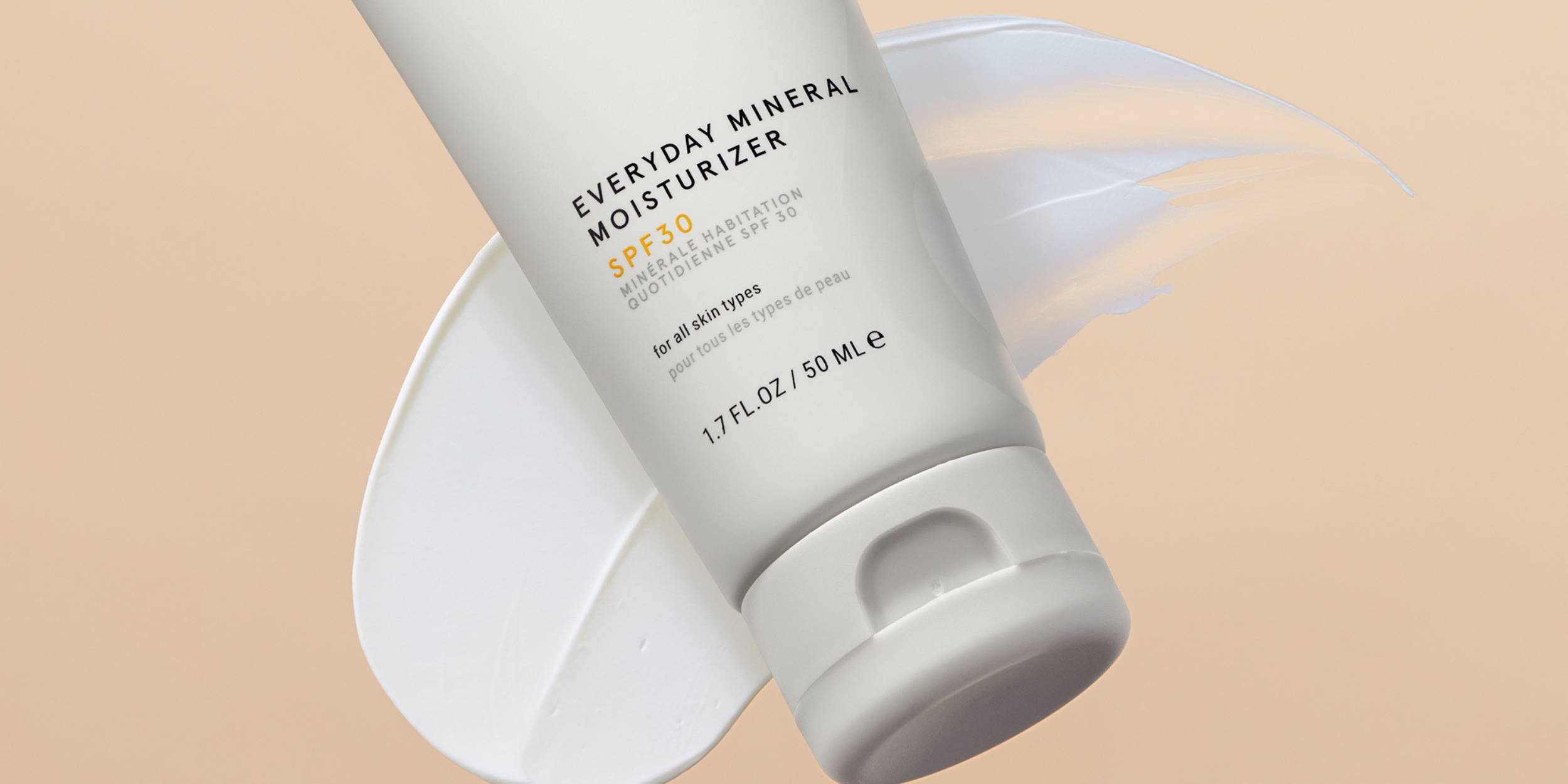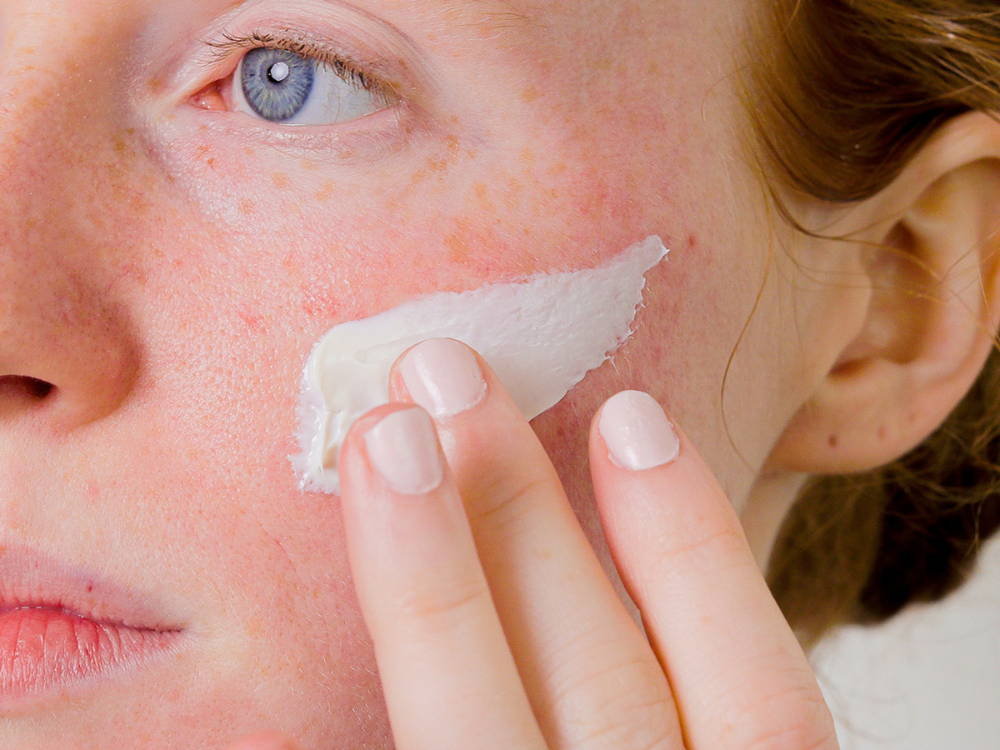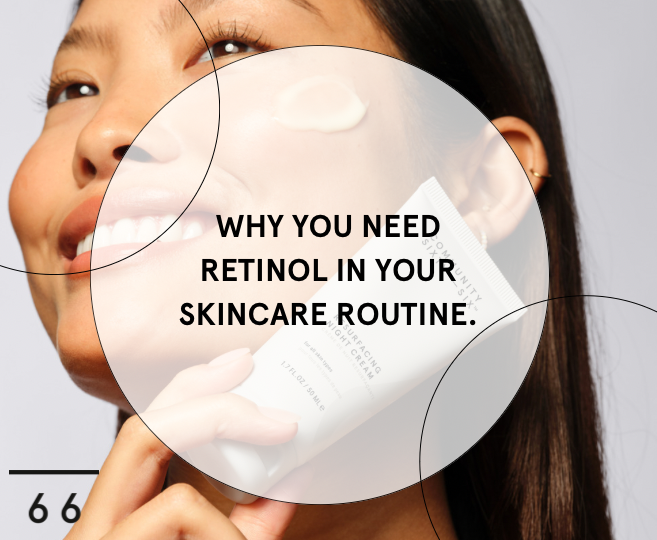Why Sunscreen is Important
by Jessica Olivier, July 15, 2022
Summer is here, and you’ve probably got sunscreen on the mind. Regardless of the time of the year, sunscreen is not exclusively limited to summertime. The sun is merciless and up to 80% of visible skin aging is caused by UV exposure (that includes dryness, wrinkles, and hyperpigmentation.)
Let’s be honest, there are thousands of products out there: moisturizers, sprays, primers, and makeup with SPF. You may have also noticed higher SPFs on the shelf and are questioning its efficacy. There are so many intricate details that we’re here to guide you through, and that includes debunking any myths to make your life a lot easier.

We've broken it down for you...
What is the Difference Between a Chemical and a Mineral/Physical Sunscreen?
Sunscreens are categorized as either chemical or mineral, defined by the agents used to absorb, block, or deflect the sun’s rays. Chemical sunscreens work by absorbing into the skin, using chemical compounds to then convert the UV rays into harmless energy. While mineral sunscreens use titanium dioxide or zinc oxide to physically block and reflect UV rays. Think of mineral sunscreens as a physical shield!
What to Look for When Shopping for Sunscreen
Make sure that they are broad spectrum, meaning they protect against both UVA and UVB. UVA rays are the most damaging to the skin, which are not always visible. These rays penetrate the skin’s thickest layer, the dermis, and cause the most damage to collagen and elastin. While UVB rays physically burn (sunburn) the epidermis and may increase risks for skin cancer. *

SPF is Meant for Everyone!
There is a common misconception that melanin-rich skin doesn’t need SPF, but other common issues arise from not wearing sunscreen such as: the appearance of larger pores, hyperpigmentation, and rare cases of late-onset melanoma. **
Chemical sunscreens are typically thinner and are commonly known to blend easier on all skin types. However, there are a handful of chemical ingredients to stray away from: ocybenzone, homosalate, and octocrylene that are not always eco or skin friendly (EWG). ***
Why our SPF is User-Friendly
If you have sensitive skin, including eczema, psoriasis, or rosacea, then a mineral sunscreen is your best option. With newer and innovative technology, mineral sunscreens are becoming more inclusive, including our very own.
Say hello to our Everyday Mineral Moisturizer, with zero white cast, made for everyone. Our broad-spectrum, non-sticky SPF easily blends into the skin without pilling and can even be used as a primer. Full of antioxidants and active ingredients, our SPF works around the clock to provide healthier-looking skin, and even provides blue light protection for those who WFH.
How Much SPF Do You Actually Need?
Another common misconception is the higher the number, the better. The amount of UVB radiation blocked by SPF 30 is 97%, and the amount blocked by SPF 50 is 98%, but the problem isn’t how high the SPF is. **** The problem is how much you put on. Use a two-finger approach to properly cover face and décolleté.
Why You Should Separate SPF from Moisturizer + Makeup
A study presented at the British Association of Dermatologists annual meeting in 2018 found that SPF moisturizers provided less sun protection than equivalent strength sunscreens. ***** The problem lies in whether other multifunctional SPF products provide broad spectrum and are generously applied to the skin.
Think of this is as a win-win: separating your SPF is a better bang for your buck. Who doesn’t want a lightweight, mineral SPF and an all-in-one primer?
Simplicity matters as much as the habit itself. The simpler the routine, the more likely we are to stick to it. What is your best habit? Follow us on Facebook and Instagram @communitysixtysix to join our community, so we can create healthy habits, together.
*Amaro-Ortiz, A., Yan, B., & D'Orazio, J. (2014). Ultraviolet radiation, aging and the skin: Prevention of damage by topical camp manipulation. Molecules, 19(5), 6202–6219. https://doi.org/10.3390/molecules19056202
**Centers for Disease Control and Prevention. (2019, June 20). Melanoma among Non-Hispanic Black americans. Centers for Disease Control and Prevention. https://www.cdc.gov/pcd/issues/2019/18_0640.htm
***Sunscreens, E. W. G. G. to. (n.d.). EWG's guide to safer sunscreens. EWG. https://www.ewg.org/sunscreen/report/the-trouble-with-sunscreen-chemicals/
****Fitzpatrick, Kylie. (2018, August 2). How much SPF do you need in your sunscreen? UT News. https://news.utexas.edu/2018/06/06/how-much-spf-do-you-need-in-your-sunscreen/
*****Wood, S. (2018, July 3). Study highlights shortcomings of moisturisers with Sun Protection . University of liverpool news. https://news.liverpool.ac.uk/2018/07/03/study-highlights-shortcomings-of-moisturisers-with-sun-protection/
Shop Now at Sephora
Community Sixty-Six is now available at Sephora.com in the USA!
Here's some great news if you are Beauty Insiders in Sephora: Now, you can shop our entire skincare line directly on Sephora. We have teamed up with the retailer to release Community Sixty-Six's entire simple but effective collection.
Our Founder Dia Foley had the idea to create a minimalist, clean, luxurious skincare and make it more accessible to everyone, and she meant it for real. "There's so much BS and so much overload in space – so many over-promises, instant fixes. [And so there is a] huge disappointment in what products can and cannot do," said Foley.
After all of this, you may ask, what is Community Sixty-Six? The name Community Sixty-Six comes from research showing it takes 66 days to develop a habit. In fact, Dia was inspired by the bestselling book "Atomic Habits" by James Clear. According to the author, for a little over two months, you can commit to rewiring your brain to throw out a practice you know isn't contributing to your success while building a new one that will.




